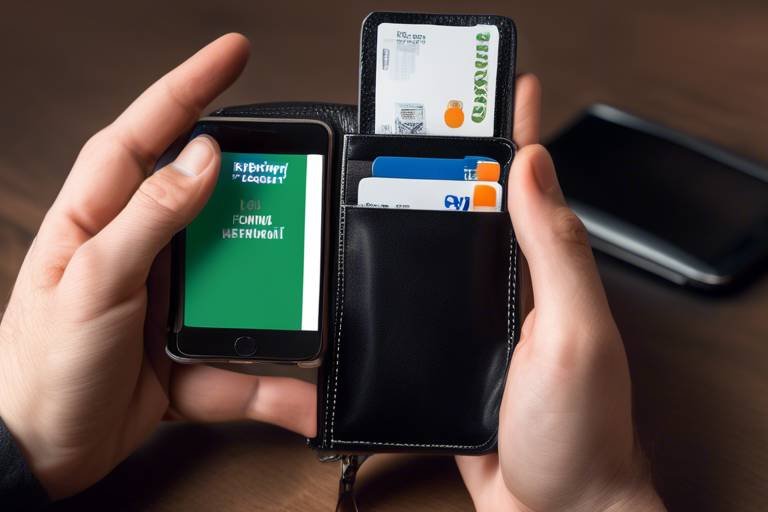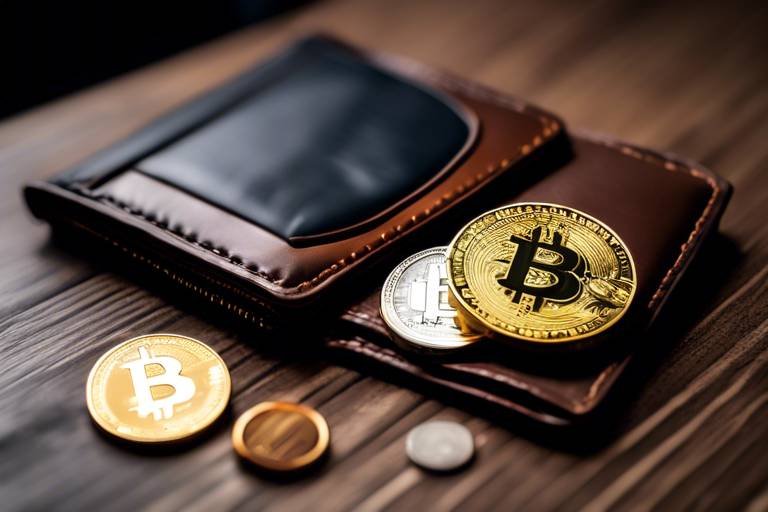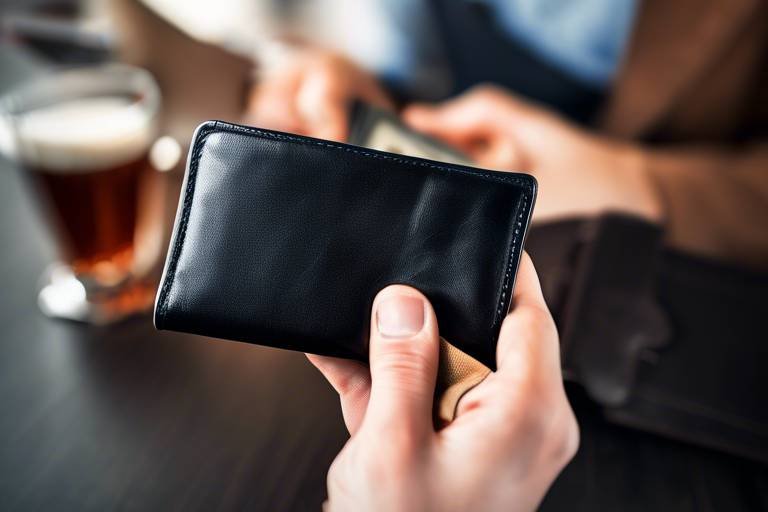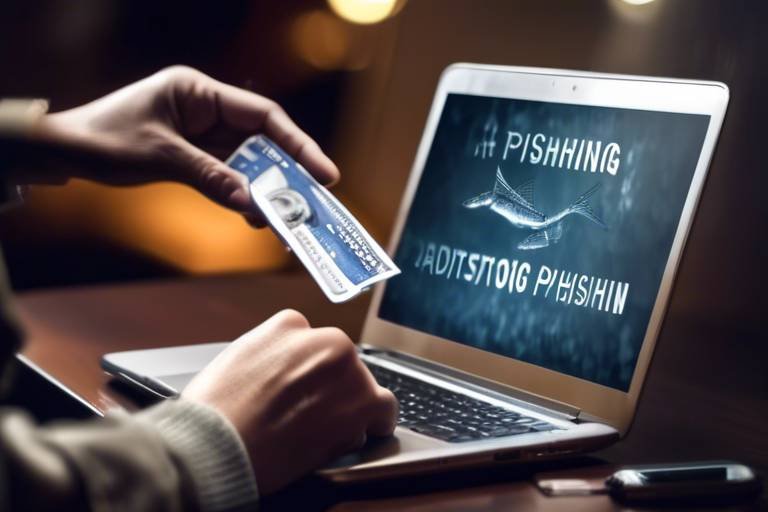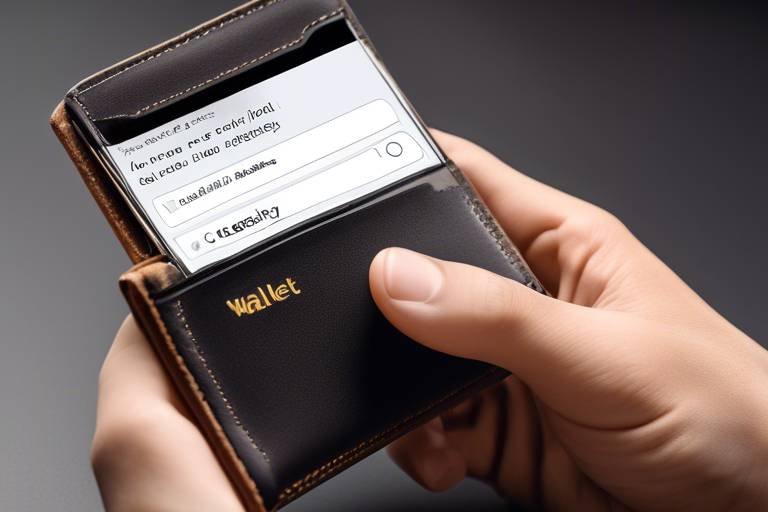The Importance of Wallet User Support and Resources
In today's digital age, the rise of cryptocurrency and digital transactions has led to an increasing reliance on digital wallets. These wallets serve as a virtual bank, allowing users to store, send, and receive digital assets with just a few clicks. However, as with any technology, users often encounter hurdles that can impede their experience. This is where user support and educational resources come into play, acting as lifelines for those navigating the often-turbulent waters of digital finance. Imagine trying to sail a ship without a map—frustrating, right? That's how many users feel when they lack adequate support and resources.
Effective user support is not just a luxury; it's a necessity. For many, digital wallets represent a significant investment of time and money. When issues arise, whether it’s a transaction that doesn’t go through or a forgotten password, users need immediate assistance to resolve their problems. Moreover, educational resources empower users to make informed decisions, enhancing their overall experience. Think of it as having a knowledgeable friend by your side, ready to guide you through the intricacies of the digital wallet landscape.
Furthermore, community engagement plays a pivotal role in enhancing user experience. When users can connect with others who share similar experiences, it fosters a sense of belonging and support. Community forums and social media groups become platforms for sharing knowledge, troubleshooting issues, and celebrating successes. It’s like a digital campfire where everyone gathers to share stories and advice, creating a vibrant ecosystem of support.
In conclusion, the importance of wallet user support and resources cannot be overstated. As the digital landscape continues to evolve, so too must the support systems that assist users. By prioritizing effective assistance, educational materials, and community engagement, digital wallet providers can significantly enhance the user experience, ensuring that everyone feels confident and secure in their digital transactions.
- What is a digital wallet? A digital wallet is a software application that allows users to store, send, and receive digital currencies and assets.
- How do I choose the right wallet? Consider factors such as security features, ease of use, and whether you need a hot or cold wallet based on your transaction needs.
- What should I do if I forget my wallet password? Most wallets have a recovery process, often involving security questions or backup recovery phrases.
- How can I secure my digital wallet? Implementing two-factor authentication, being cautious of phishing attempts, and keeping your software updated are essential steps.

Understanding Wallet Types
When diving into the world of digital wallets, it’s essential to grasp the various types available, as each serves a unique purpose and comes with its own set of advantages and disadvantages. Think of digital wallets as different vehicles; just like you wouldn’t choose a sports car for a family road trip, you need to select the right wallet based on your specific needs and security preferences. The three primary types of digital wallets are hot wallets, cold wallets, and hardware wallets.
Hot wallets are connected to the internet, making them highly convenient for daily transactions. Imagine having cash in your pocket; it’s easily accessible but also prone to theft. Hot wallets allow users to send and receive funds quickly, which is perfect for those who frequently engage in trading or online purchases. However, because they are online, they are more susceptible to hacking and phishing attacks.
On the other hand, cold wallets are not connected to the internet, providing a higher level of security for your digital assets. They are akin to storing your valuables in a safe at home—secure and protected from online threats. Cold wallets are ideal for long-term storage of cryptocurrencies, as they reduce the risk of unauthorized access. However, this added security comes with a trade-off: they can be less convenient for frequent transactions.
Then we have hardware wallets, a hybrid between hot and cold wallets. These are physical devices that securely store your private keys offline but can connect to the internet when needed. Think of them as a safety deposit box that you can access when necessary. Hardware wallets offer a robust layer of security while still allowing you to manage your assets with relative ease. They are particularly recommended for users who hold significant amounts of cryptocurrencies.
To summarize, understanding these wallet types is crucial for making informed decisions. Below is a quick comparison table that highlights the key features of each wallet type:
| Wallet Type | Connection | Security Level | Best For |
|---|---|---|---|
| Hot Wallet | Online | Low | Frequent transactions |
| Cold Wallet | Offline | High | Long-term storage |
| Hardware Wallet | Offline (with occasional online access) | Very High | Secure management of digital assets |
Ultimately, the choice of wallet will depend on your individual needs. Are you a trader who values speed, or are you a long-term holder who prioritizes security? By understanding the distinctions between these wallet types, you can make a more educated decision that aligns with your financial goals and security requirements.

Common User Challenges
In the ever-evolving landscape of digital wallets, users often encounter a myriad of challenges that can hinder their experience and, in some cases, jeopardize their security. Understanding these challenges is not just helpful; it's essential for any user navigating this digital frontier. Imagine trying to cross a busy street without understanding the traffic signals—it can be chaotic and risky! Similarly, without knowledge of the common hurdles in digital wallets, users may find themselves in precarious situations.
One of the most significant challenges users face is security concerns. With the rise of digital transactions, the risk of unauthorized access and fraud has skyrocketed. Users frequently worry about whether their wallets are secure enough to protect their hard-earned assets. This concern is valid, especially when you consider the potential for phishing attacks and other cyber threats. Users need to be aware of the tactics employed by cybercriminals and how they can safeguard their wallets. For instance, recognizing suspicious emails or links can be the difference between a secure transaction and a compromised wallet.
Another prevalent issue is transaction problems. Users often report difficulties in completing transactions, which can lead to frustration and confusion. Whether it's a delay in processing or an unexpected error message, these hiccups can be disheartening. To illustrate, let’s consider a scenario where a user attempts to send funds to a friend but encounters an error due to insufficient network fees. This situation can leave users feeling helpless and unsure about the reliability of their wallet. Understanding these transaction-related issues is crucial for users, as it allows them to troubleshoot effectively and avoid potential pitfalls.
Recovery problems also pose a significant challenge. What happens if a user loses access to their wallet? This can be a nightmare scenario, especially if they have not taken the necessary precautions to back up their wallet information. Many users are unaware of the importance of recovery phrases or backup options, which can lead to irreversible loss of funds. It’s akin to misplacing the keys to a safe; without them, access to valuable assets is lost forever. Therefore, educating users on the importance of these recovery options is vital for ensuring they can regain access to their wallets in times of need.
In summary, the common challenges faced by digital wallet users—security issues, transaction problems, and recovery difficulties—highlight the necessity for effective support and resources. By understanding these challenges, users can better navigate the complexities of digital wallets and enhance their overall experience. The digital wallet landscape can be daunting, but with the right knowledge and tools, users can confidently manage their assets and enjoy the benefits of this innovative technology.
- What should I do if I suspect a phishing attack? If you suspect a phishing attack, immediately change your wallet passwords, enable two-factor authentication, and report the incident to your wallet provider.
- How can I ensure my transactions are secure? Always double-check recipient addresses, use strong passwords, and consider using hardware wallets for larger transactions.
- What steps should I take if I lose my recovery phrase? Unfortunately, losing your recovery phrase may result in permanent loss of access to your wallet. Always store your recovery phrase securely and consider using multiple backup methods.

Security Concerns
When it comes to digital wallets, one of the most pressing issues users face is security. With the rise of digital currencies and online transactions, the safety of personal and financial information has become a significant concern for many. Imagine your wallet filled with cash and important documents, but instead of being physically present, it's all stored in a digital format. This scenario can be both empowering and nerve-wracking. Therefore, understanding the common vulnerabilities and adopting best practices to safeguard your digital assets is crucial.
One of the primary security threats users encounter is phishing attacks. These attacks often come in the form of deceptive emails or messages that trick users into providing sensitive information, such as passwords or private keys. The perpetrators are becoming increasingly sophisticated, often mimicking legitimate companies. To defend against these attacks, users should always verify the source of any communication and be cautious about clicking on links or providing personal information. Here are a few warning signs to look out for:
- Unusual email addresses that don’t match the official domain.
- Urgent requests for personal information.
- Generic greetings, such as "Dear Customer" instead of your name.
Another layer of protection that users can implement is two-factor authentication (2FA). This security measure requires not only a password and username but also something that only the user has on them, such as a physical device or a mobile app that generates a time-sensitive code. Think of it as having a double lock on your door; while a strong password is the first line of defense, 2FA acts as the second line, making it significantly harder for unauthorized users to gain access. Implementing 2FA is essential for anyone serious about protecting their digital wallet.
Moreover, users should always keep their software and wallets updated. Developers frequently release updates that patch vulnerabilities. Neglecting these updates is akin to leaving your front door ajar; it invites trouble. Regularly updating your wallet software ensures that you benefit from the latest security features and fixes, keeping your digital assets secure.
In conclusion, while the world of digital wallets offers incredible convenience, it also comes with its fair share of risks. By being aware of common security concerns and taking proactive measures like recognizing phishing attempts and enabling two-factor authentication, users can significantly enhance their security posture. Remember, in the digital realm, being informed and vigilant is your best defense against potential threats.
Q1: What should I do if I suspect a phishing attempt?
A1: If you suspect a phishing attempt, do not click on any links or provide any personal information. Instead, report the email or message to the legitimate company and delete it immediately.
Q2: Is two-factor authentication necessary for all digital wallets?
A2: While not mandatory, two-factor authentication is highly recommended for all digital wallets as it adds an essential layer of security.
Q3: How often should I update my digital wallet?
A3: You should update your digital wallet software as soon as updates are available to ensure you have the latest security patches and features.

Phishing Attacks
This article explores the critical role of user support and resources for digital wallet users, emphasizing the need for effective assistance, educational materials, and community engagement to enhance user experience and security.
Different types of digital wallets exist, including hot wallets, cold wallets, and hardware wallets. Understanding these distinctions is crucial for users to choose the right wallet that suits their needs and security preferences.
Users often face challenges with digital wallets, such as security concerns, transaction issues, and recovery problems. Identifying these challenges helps in creating effective support strategies to assist users in overcoming them.
Security is a primary concern for wallet users. This section discusses common vulnerabilities and best practices to safeguard digital assets, ensuring users feel secure while managing their wallets.
Phishing attacks are prevalent in the digital wallet space and can strike fear into the hearts of even the most seasoned users. These attacks typically involve malicious actors impersonating legitimate services to trick users into revealing sensitive information, such as passwords or private keys. Imagine receiving an email that looks just like it’s from your wallet provider, urging you to "verify your account" or "update your payment information." It’s a common ruse, and many fall victim to it. To combat this, users must remain vigilant and informed.
Recognizing the warning signs of phishing is essential in protecting your assets. Here are some common tactics used by phishers:
- Impersonation: Emails or messages that mimic official communications.
- Urgency: Messages that create a false sense of urgency, pushing you to act quickly.
- Suspicious Links: Links that direct you to fake websites designed to harvest your credentials.
To guard against these threats, users should adopt a proactive approach. Always verify the sender's email address and look for inconsistencies in the communication. Additionally, avoid clicking on links in unsolicited emails. Instead, navigate directly to the official website of your wallet provider. It’s like locking your front door; you wouldn’t leave it wide open just because someone knocked, right?
Implementing strong security measures, such as two-factor authentication (2FA), can significantly reduce the risk of falling victim to phishing attacks. By requiring a second form of verification, even if your login credentials are compromised, your assets remain shielded. In the digital realm, this is akin to having a security guard at your door who checks IDs before allowing entry.
Implementing two-factor authentication (2FA) adds an extra layer of security to wallets. This subheading explains how 2FA works and why it is essential for safeguarding digital assets.
Transaction-related problems can frustrate users. This section outlines common transaction issues and offers solutions to help users navigate these challenges effectively.
Effective user support is essential for enhancing the wallet experience. This section delves into various support channels, including FAQs, live chat, and community forums, to assist users efficiently.
Engaging with the user community fosters a supportive environment. This subheading discusses the importance of community forums and social media groups for sharing knowledge and experiences among wallet users.
Access to educational resources is vital for users. This section highlights the importance of tutorials, guides, and webinars in empowering users to utilize their wallets confidently and securely.
Q: What are phishing attacks?
A: Phishing attacks are fraudulent attempts to obtain sensitive information by disguising as a trustworthy entity in electronic communications.
Q: How can I protect myself from phishing?
A: Always verify the sender's information, avoid clicking on suspicious links, and use two-factor authentication for added security.
Q: What should I do if I think I've been phished?
A: Immediately change your passwords, enable 2FA, and report the incident to your wallet provider.

Two-Factor Authentication
When it comes to protecting your digital wallet, two-factor authentication (2FA) is like having a double lock on your front door. It’s an essential security measure that adds an extra layer of protection to your wallet, ensuring that even if someone manages to get your password, they still can’t access your funds without a second verification step. So, how does it work? In simple terms, 2FA requires two forms of identification before allowing access. Typically, this means something you know (like your password) and something you have (like a mobile device that receives a verification code).
Imagine you’re trying to access your favorite online shopping site. You enter your username and password, and just when you think you’re in, your phone buzzes with a text message containing a unique code. You enter that code, and voilà! You’re granted access. This process significantly reduces the chances of unauthorized access, making it a must-have for anyone serious about securing their digital assets.
Here are some key benefits of implementing two-factor authentication:
- Enhanced Security: With 2FA, even if your password is compromised, hackers won't be able to access your wallet without the second factor.
- Peace of Mind: Knowing that you have an extra layer of protection allows you to use your wallet with confidence.
- Easy to Set Up: Most wallets offer straightforward instructions to enable 2FA, making it accessible for everyone.
However, it’s important to choose the right method for your second factor. Options can include:
- SMS Codes: Sent to your mobile phone, but be cautious as these can be intercepted.
- Authenticator Apps: Such as Google Authenticator or Authy, which generate time-based codes that are more secure.
- Hardware Tokens: Physical devices that provide a unique code for each login attempt.
In conclusion, enabling two-factor authentication is a simple yet effective way to safeguard your digital wallet. It’s like having a security guard for your financial assets, ensuring that only you have access. So, if you haven’t already, take the time to set it up. Your future self will thank you!
Q: What is two-factor authentication?
A: Two-factor authentication (2FA) is a security process that requires two different forms of identification before granting access to an account.
Q: How does 2FA enhance security?
A: 2FA adds an extra layer of protection, making it significantly harder for unauthorized users to gain access to your account, even if they have your password.
Q: What are the best methods for 2FA?
A: The best methods include using authenticator apps and hardware tokens, as they provide better security than SMS codes.
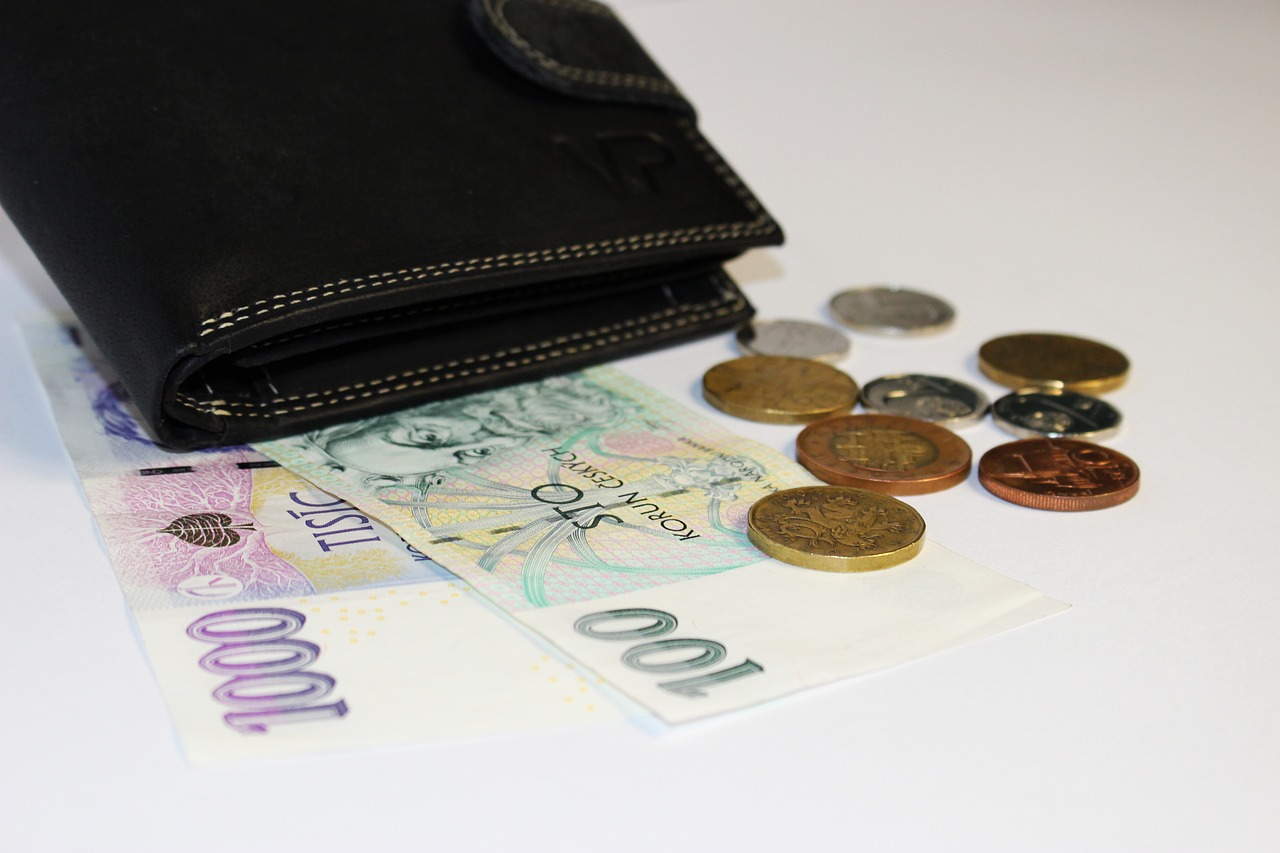
Transaction Issues
When it comes to digital wallets, transaction issues can be a real headache for users. Imagine you're at a store, ready to make a purchase, and your wallet suddenly freezes or fails to process the payment. Frustrating, right? These problems can stem from various sources, including network congestion, insufficient funds, or even technical glitches. It's crucial to understand the common transaction issues that users face to navigate these challenges effectively.
One prevalent issue is network congestion. During peak times, when many users are trying to make transactions simultaneously, the network can become overloaded. This can lead to delayed transactions or even failed attempts. To mitigate this, users should consider timing their transactions during off-peak hours or checking the network status before proceeding.
Another common problem is related to insufficient funds. It might sound obvious, but users often forget to check their wallet balance before initiating a transaction. This can lead to embarrassing situations at the checkout counter. To avoid this, it's wise to regularly monitor your wallet balance and set up alerts for low funds, ensuring you're always prepared to make a purchase.
Additionally, technical glitches can occur, causing transactions to fail unexpectedly. Whether it's a bug in the wallet app or a temporary server issue, these glitches can be incredibly frustrating. To counteract this, users should ensure that their wallet application is updated to the latest version, as developers often release patches to fix known issues. If a transaction fails, users should remain calm and check the transaction history; often, the funds will still be in the wallet or pending until the issue is resolved.
To help users better understand these transaction issues, here’s a quick overview:
| Transaction Issue | Possible Causes | Solutions |
|---|---|---|
| Network Congestion | High user activity, server overload | Try during off-peak hours, check network status |
| Insufficient Funds | Unmonitored wallet balance | Regular balance checks, set low fund alerts |
| Technical Glitches | App bugs, server issues | Update app, check transaction history |
In conclusion, being aware of these transaction issues and their solutions can significantly enhance your experience with digital wallets. Remember, the key to a smooth transaction is preparation and awareness. So, the next time you're about to make a transaction, take a moment to check your balance, be mindful of network conditions, and keep your app updated. This way, you can avoid the common pitfalls and ensure a seamless experience.
- What should I do if my transaction fails? - Check your transaction history for any updates, ensure your wallet is updated, and verify your network connection.
- How can I prevent insufficient funds? - Regularly monitor your wallet balance and set alerts for low funds to avoid surprises.
- What causes network congestion? - Network congestion typically occurs during peak usage times when many users are making transactions simultaneously.

Providing Effective Support
In the fast-paced world of digital wallets, effective user support is not just a luxury; it's a necessity. Imagine trying to navigate a new city without a map or GPS—frustrating, right? That's exactly how many users feel when they encounter issues with their wallets. The key to enhancing the wallet experience lies in providing robust support systems that are easily accessible and user-friendly. Users should feel empowered and confident, knowing that help is just a click away.
One of the most effective ways to provide support is through a variety of channels. This can include comprehensive FAQs that cover the most common queries users might have. Think of FAQs as the user manual for a complicated gadget; they break down complex information into bite-sized pieces, making it easier for users to find what they need. Additionally, offering live chat support can drastically improve user satisfaction. It’s like having a friendly guide right beside you, ready to assist you in real-time. Users appreciate immediate responses, especially when they are facing challenges with their wallets.
Another important aspect is community engagement. Engaging with users through forums and social media groups creates a sense of belonging. Users can share their experiences and learn from one another, which not only builds trust but also fosters a supportive environment. Imagine a bustling marketplace where everyone shares tips and tricks; that's the kind of atmosphere a vibrant community can create. By encouraging users to participate in discussions, wallet providers can gather valuable feedback and insights that can help refine their services.
Moreover, resource availability plays a crucial role in effective support. Providing users with educational materials such as tutorials, guides, and webinars can significantly boost their confidence in using digital wallets. These resources act as stepping stones, guiding users through various functionalities and security measures. For instance, a well-structured tutorial can simplify the process of setting up two-factor authentication or understanding transaction fees, making users feel more secure and informed.
To summarize, effective user support encompasses a multi-faceted approach that includes:
- Comprehensive FAQs
- Live chat support for immediate assistance
- Active community engagement through forums and social media
- Accessible educational resources like tutorials and webinars
By focusing on these areas, wallet providers can create a user experience that not only meets but exceeds expectations. In the digital wallet landscape, where security and user satisfaction are paramount, investing in effective support is not just a good practice; it's a game changer.
Here are some common questions users might have regarding wallet support:
| Question | Answer |
|---|---|
| What should I do if I forget my wallet password? | You can usually reset your password through the wallet's recovery options. Look for a 'Forgot Password?' link on the login page. |
| How can I ensure my wallet is secure? | Implement two-factor authentication, use strong passwords, and be cautious of phishing attempts. |
| Where can I find tutorials on using my wallet? | Check the official website of your wallet provider for educational resources, or look for community-created guides online. |

Community Engagement
Community engagement is not just a buzzword; it’s the lifeblood of any thriving digital wallet ecosystem. Imagine walking into a bustling marketplace, where everyone is sharing tips, experiences, and advice. That’s what an engaged community offers to digital wallet users. By participating in community forums and social media groups, users can connect with one another, sharing their triumphs and challenges. This interaction not only fosters a sense of belonging but also enhances the overall user experience.
Why is community engagement so crucial? Well, think about it: when users come together to discuss their experiences, they create a rich tapestry of knowledge that benefits everyone involved. For instance, if a user encounters a tricky transaction issue, they can turn to the community for advice. Other users might share their own solutions or warn about potential pitfalls, creating a collective intelligence that empowers individuals. This is especially important in the fast-paced world of digital wallets, where new challenges and updates arise constantly.
Moreover, community engagement can significantly enhance security awareness. When users share their experiences with phishing attempts or other security threats, they help educate others on how to stay safe. This shared knowledge can be invaluable, as it prepares users to recognize and avoid potential scams. Engaging with the community also provides a platform for wallet developers and support teams to gather feedback, allowing them to improve their services based on real user experiences.
To facilitate community engagement, many digital wallet providers have created dedicated forums and social media pages where users can interact. Here are some common platforms where users can engage:
- Official Forums: Many wallet providers host their own forums where users can post questions and share answers.
- Social Media Groups: Platforms like Facebook and Reddit have numerous groups dedicated to discussing digital wallets.
- Discord Channels: Real-time communication through Discord allows users to chat and share insights instantly.
In conclusion, community engagement is a powerful tool for enhancing the digital wallet experience. It not only builds a supportive environment but also equips users with the knowledge and resources they need to navigate the complexities of digital finance confidently. So, whether you’re a seasoned pro or a newcomer, dive into the community and start connecting!
Q1: What are the benefits of joining a digital wallet community?
A1: Joining a community allows users to share experiences, learn from others, and stay updated on the latest security practices and wallet features.
Q2: How can I ensure the community I join is trustworthy?
A2: Look for official forums or groups associated with reputable wallet providers. Check for active moderation and user feedback to gauge the community's reliability.
Q3: Can community engagement help with security issues?
A3: Absolutely! Sharing experiences about phishing attempts and other security threats can educate users on how to protect themselves effectively.
Q4: Are there any risks associated with engaging in online communities?
A4: Yes, while most communities are supportive, it’s essential to be cautious about sharing personal information. Always verify information before acting on it.

Resource Availability
In the ever-evolving world of digital wallets, having access to the right resources can significantly enhance a user's experience. Imagine stepping into a vast library filled with knowledge, where every book is a tutorial, guide, or webinar designed to empower you in navigating your digital wallet with confidence. These resources serve as your compass, guiding you through the complexities of digital finance and helping you make informed decisions.
One of the most critical aspects of resource availability is the variety of formats in which these resources are presented. Users have different learning styles, and a one-size-fits-all approach simply doesn't cut it. Some users may prefer step-by-step video tutorials that visually demonstrate how to perform specific tasks, while others might find written guides more helpful. Furthermore, webinars are an excellent way for users to engage in real-time discussions and ask questions directly to experts in the field. This interactive element can make a world of difference, as it allows users to clarify doubts and gain insights that static resources may not provide.
Additionally, the accessibility of these resources is paramount. Users should be able to find educational materials easily, whether they're browsing the official website of their wallet provider or engaging in community forums. A well-organized resource center, complete with a search function and categorized content, can make it much easier for users to find exactly what they need. For instance, a user might be looking for information on enabling two-factor authentication; if they can quickly access a dedicated section on security features, they are more likely to implement those protective measures.
Moreover, community-driven resources can be incredibly valuable. Users often share their experiences and tips in forums or social media groups, creating a rich tapestry of knowledge that's constantly updated. This collaborative environment fosters a sense of belonging and support, making users feel less isolated in their journey. It's like having a group of friends who are all learning together, sharing their successes and failures, and ultimately growing as a community.
To further illustrate the importance of resource availability, consider the following table that outlines different types of educational resources available for digital wallet users:
| Resource Type | Description | Benefits |
|---|---|---|
| Video Tutorials | Visual guides that demonstrate wallet features and functions. | Easy to follow and great for visual learners. |
| Written Guides | Step-by-step articles that cover various wallet topics. | Accessible anytime and can be referenced as needed. |
| Webinars | Live sessions with experts discussing wallet usage and security. | Interactive Q&A sessions provide personalized insights. |
| Community Forums | Platforms for users to share experiences and ask questions. | Supportive environment fosters collaboration and learning. |
In conclusion, resource availability is not just a luxury; it's a necessity for anyone navigating the digital wallet landscape. By providing diverse educational materials and fostering community engagement, wallet providers can empower users to manage their digital assets confidently and securely. After all, when users are equipped with the right knowledge and support, they are more likely to enjoy a seamless experience and feel secure in their transactions.
- What types of resources should I look for when choosing a digital wallet?
Look for video tutorials, written guides, webinars, and active community forums to ensure you have comprehensive support. - How can I ensure I’m accessing reliable information?
Always refer to the official website of your wallet provider and cross-check information with trusted community sources. - Are community forums safe to use?
While most community forums are safe, always be cautious about sharing personal information and verify the credibility of users before taking their advice.
Frequently Asked Questions
- What types of digital wallets are available?
Digital wallets come in various forms, including hot wallets, cold wallets, and hardware wallets. Hot wallets are connected to the internet and are convenient for everyday transactions, while cold wallets are offline and provide enhanced security for long-term storage. Hardware wallets are physical devices that securely store your digital assets.
- How can I ensure my digital wallet is secure?
To secure your digital wallet, follow best practices such as using strong, unique passwords and enabling two-factor authentication (2FA). Regularly updating your wallet software and being cautious about phishing attempts can also significantly enhance your security. Always double-check URLs and avoid clicking on suspicious links.
- What should I do if I experience transaction issues?
If you encounter transaction issues, first check your internet connection and ensure your wallet software is up to date. If the problem persists, consult the support resources provided by your wallet service, such as FAQs or live chat options. Many common transaction issues can be resolved with the right guidance.
- How can I recover my wallet if I forget my password?
Most digital wallets provide a recovery process, often using a recovery phrase or backup key. Make sure to store your recovery phrases securely, as they are essential for accessing your wallet. If you're unsure, refer to the wallet's documentation or support for specific recovery instructions.
- What resources are available for learning about digital wallets?
There are numerous resources available to help you understand digital wallets better. Many wallet providers offer tutorials, guides, and webinars. Additionally, community forums and social media groups can be excellent places to share experiences and learn from other users.
- How can community engagement improve my wallet experience?
Engaging with the wallet user community can provide valuable insights and support. By participating in forums and social media groups, you can share experiences, ask questions, and learn about best practices from other users, which can enhance your overall wallet experience.

